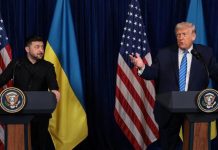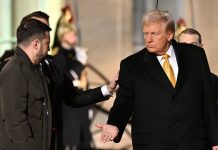Washington(Reuters) – Legal and security experts have argued that even during his presidency, Donald Trump did not possess the legal authority to declassify a U.S. nuclear weapons-related document that he is currently charged with unlawfully possessing. Contrary to Trump’s assertions, the document in question, listed as No. 19 in the indictment, can only be declassified through a specific process involving the Department of Energy and the Department of Defense, as stipulated by the Atomic Energy Act.
According to experts, this nuclear document stands out among the 31 listed in the indictment because the declassification of the others falls under the executive order. Steven Aftergood, a government secrecy expert with the Federation of Atomic Scientists, explained that the claim made by Trump that he had the power to declassify the document is irrelevant, as it was classified by law rather than by executive order.
The unique status of the nuclear-related information further undermines Trump’s defense strategy centered around declassification. Prosecutors are likely to argue that declassification is inconsequential since Trump is charged under the Espionage Act, which criminalizes the unauthorized retention of “national defense information,” encompassing any secrets that could be advantageous to the nation’s adversaries.
Document No. 19 bears the classification “FRD” (Formerly Restricted Data), which designates secret information related to the military use of nuclear weapons. The indictment describes it as undated and concerning the nuclear weaponry of the United States.
The experts point to the Atomic Energy Act of 1954, which governs the declassification process for nuclear weapons data. They emphasize that the president does not possess the authority to make the decision to declassify such information. While Trump and his supporters claim that he declassified over 100 secret documents while still in office, experts assert that the AEA defines a specific process for declassifying nuclear weapons data, which remains among the most closely guarded secrets of the U.S. government.
The most sensitive nuclear weapons information falls under the classification “RD” (Restricted Data), encompassing warhead designs, uranium and plutonium production, and other highly classified materials. The Department of Energy downgrades certain nuclear weapons data to “FRD” in order to share it with the Department of Defense, but it remains classified. The declassification of FRD information can only occur through a process overseen by the secretaries of energy and defense, as outlined by the AEA.
While some, such as David Jonas, former general counsel for the U.S. National Nuclear Security Administration, argue that the president possesses the constitutional authority to declassify all classified documents, others, including national security law expert Elizabeth Goitein, disagree. Goitein asserts that Congress has the power to limit presidential authority in national security matters.
Ultimately, legal experts challenge Trump’s claim that he had the power to declassify the nuclear weapons document, underscoring the specific process outlined by the Atomic Energy Act and emphasizing the limitations of presidential authority in this context.






